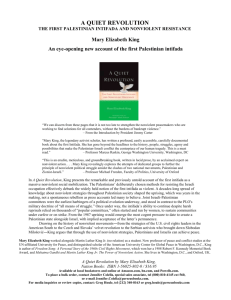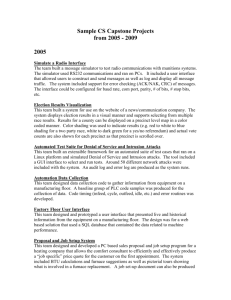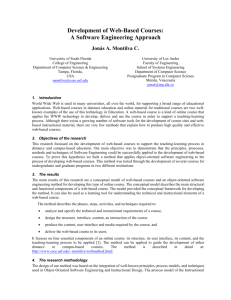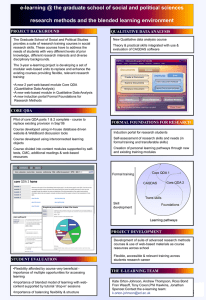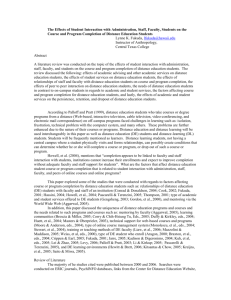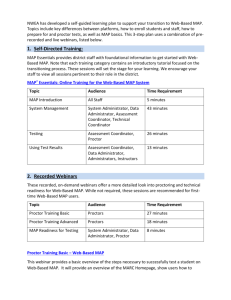HYBRID-OVERVIEW
advertisement
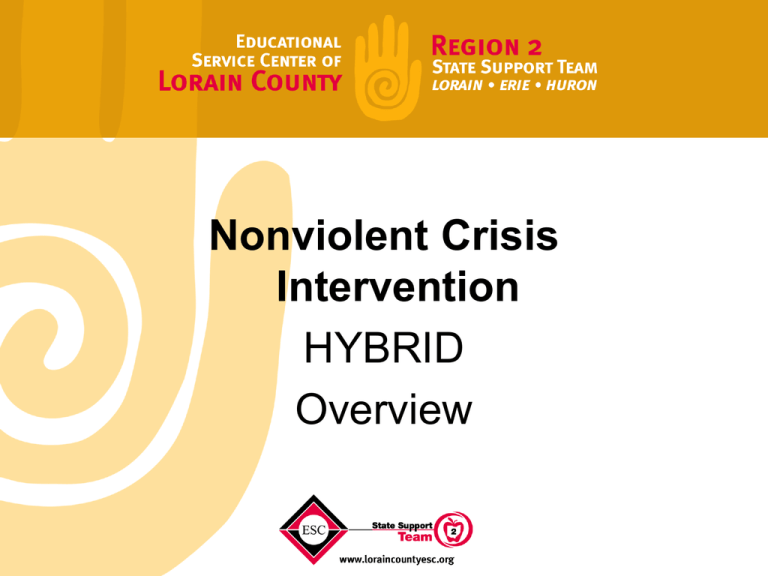
Nonviolent Crisis Intervention HYBRID Overview Certified Trainer Moira Erwine ESCLC erwine@esclc.org 440-324-5777 ext 1156 Philosophy of Nonviolent Crisis Intervention Training • • • • Care Welfare Safety Security We cannot always control the behaviors of a person in a crisis moment. We cannot always make people do as we ask. With proper training, we can control our own behavior and responses. Learning Goals- PREVENTION and INTERVENTION You will learn PREVENTIVE Techniques in Units 1-7 online. You will learn and practice strategies to intervene in a crisis situation in a professional manner that provides for the Care, Welfare, Safety and Security of all who are involved Units 8-10 during the face to face session. Learning Target-Learn how to respond with the right support in order to de-escalate the situation and avoid a crisis. Behavior Examples Staff Response Examples Pacing, wringing hands, quiet. Offer supportive, encouraging responses. “I said NO, that is spelled NO!” “Who made you the boss?” “I know where you live!” Offer choices, not ultimatums Hitting, throwing objects, headbanging. Use planned physical interventions only as a last resort. “I’m sorry, I didn’t mean it.” Talk and listen for causes, negotiate a plan. Same Program—New Delivery Option The Crisis Prevention Institute (CPI) is pleased to introduce Nonviolent Crisis Intervention® • hybrid training—a state-of-the-art delivery option that blends web-based and classroom instruction. This innovative training teaches the same effective skills, supports the same principles, promotes the same philosophy, and adheres to the same quality standards as traditional Nonviolent Crisis Intervention® training. With successful passage of the POST TEST, you will receive a blue card and a certificate with an EXPIRATION DATE. You will need to attend a one day refresher prior to the expiration date. HYBRID Overview Two Essential Components Nonviolent Crisis Intervention® hybrid training consists of two components, and both are necessary for successful completion of the program. 1. Web-based Instruction The web-based component contains a variety of interactive presentations, scenarios, videos, and learning assessments that relate to each unit of the Nonviolent Crisis Intervention® training program. During the web-based instruction, the program terms and definitions are solidified. This allows for a unique focus on application during classroom instruction. ACCESS for 3 months from initial login. HYBRID Overview 2. Classroom Instruction The face-to-face Certified Instructor-led component builds on the webbased learning. Discussion, activities, and participant examples prompted from the web-based instruction reinforce program concepts with a focus on workplace application. Additionally, all personal safety and physical interventions are taught and practiced during this portion of the program. Benefits to Learners 24/7 Content Access Learners can access the web-based component of the program at their convenience, regardless of the hour of the day or the day of the week. This allows them to select the time frame that is most compatible with their schedule. Comfortable Pace The self-directed learning gives participants the flexibility to proceed through the web-based content at a pace that is comfortable for them. If they choose, they can spend more time exploring new concepts with the review options that are available throughout the program. Benefits to Learners continued… Save and Return Convenience The web-based portion also allows learners to save their work at the end of each unit and return to it at a later time. This provides the opportunity to divide the web-based content into sessions that best fit their schedule. Knowledge Base Learners come to the classroom portion with a knowledge base of Nonviolent Crisis Intervention® training and are ready to build upon the learning. They complete assignments during the web-based portion, print them, and bring them to class for discussion. System Requirements • Intel® Pentium® III w/450 MHz or faster processor (or equivalent) • 128 Mb RAM • Flash 9.0.0. plug in and JavaScript enabled • Microsoft® Windows Vista® or Microsoft® Windows XP® or Mac OSX v.10.4 (or higher) • Internet Explorer 6.0 (or higher) or Firefox 3.0 (or higher) or equivalent Internet browser • Audio capabilities • Printer access Things to consider… • Have honest conversations about structures to support each building with the development of crisis teams that are trained in CPI. Including regular crisis team meetings to plan, practice and support the needs of students who are having ‘behavior failures’. • Think about the future of getting an in house trainer to provide new staff with 2 day trainings and refreshers as needed. Schedule a refresher (Autism, Working with Nonverbal Clients, or a General refresher) before the end of this year. • Consider implementing Positive Behavior Supports at each school. http://www.pbis.org/ Next Steps… • Login to the course and complete the units by October 24th. • Bring your portfolio and the web based entries when we meet again at the ESC of Lorain County on either October 25th or October 26th. Half of you will attend the 25th and half on the 26th-see DEB REMEMBER you have 3 months from login to access to the course online.


